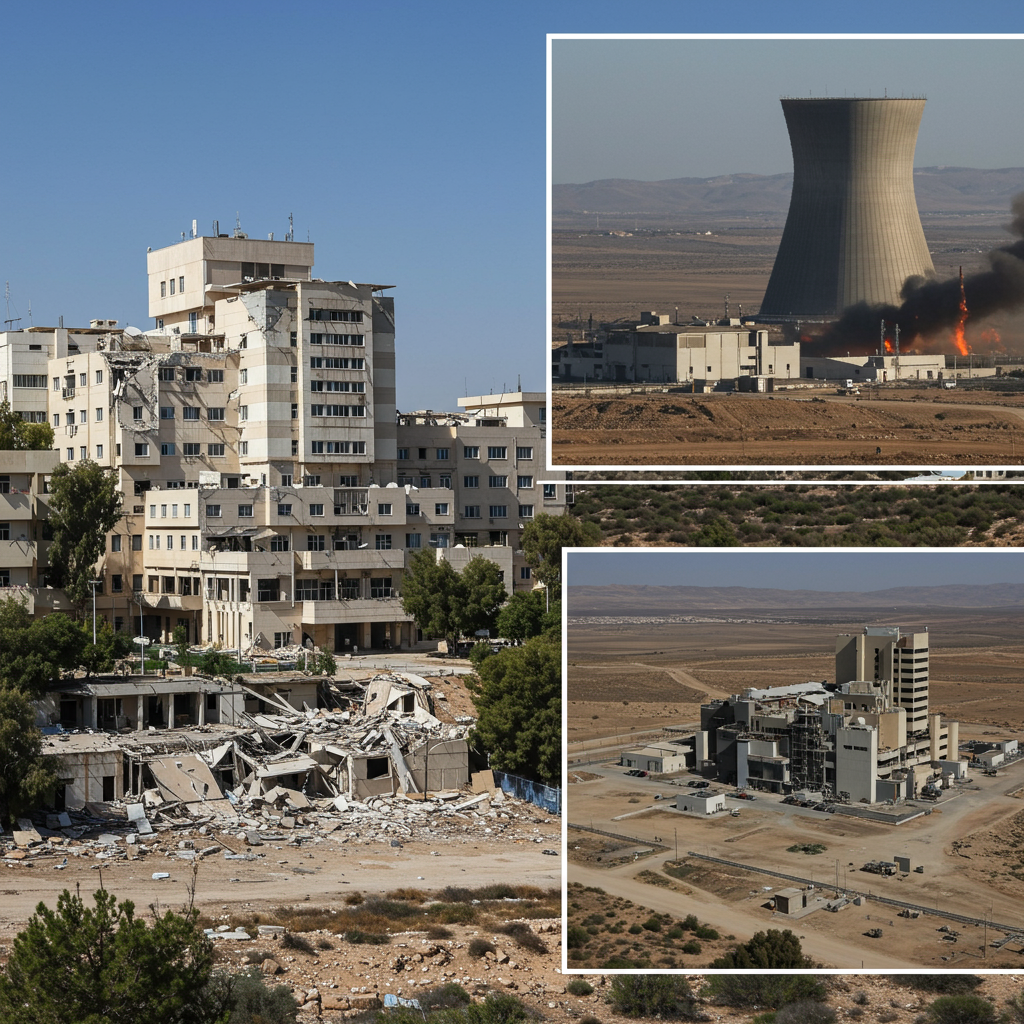Britain experienced profound shock following a mass stabbing attack on an LNER train traversing central England. This incident, which Prime Minister Keir Starmer called “deeply concerning,” saw multiple passengers injured and prompted an immediate, robust emergency response. Authorities have swiftly acted, ruling out terrorism and focusing their investigation on a single suspect. Amidst the chaos, the selfless actions of railway staff and passengers emerged, with one LNER employee’s “heroic” intervention credited with saving numerous lives. This article delves into the harrowing details of the attack, the ongoing police investigation, and the broader context of knife crime in the UK, aiming to provide clarity and reassurance to a concerned public.
The Harrowing Incident: What Unfolded on Board
On a Saturday evening, a high-speed London North Eastern Railway (LNER) service, which had departed from Doncaster at 6:25 p.m., became the scene of a terrifying attack. The train was bound for London King’s Cross. Passengers reported screams and chaos just after the train left Peterborough station in Cambridgeshire. An individual, later identified as a 32-year-old British man from Peterborough, began a violent assault.
Timeline of Terror
The attack unfolded with alarming speed. At approximately 7:42 p.m. local time, emergency services received the first distress call. The train driver, Andrew Johnson, displayed remarkable presence of mind. He immediately diverted the train from its fast track to a slower line with platform access at Huntingdon. This critical decision ensured an unscheduled stop, facilitating rapid access for emergency responders. Within eight minutes of the initial 999 call, armed officers were on the platform. They quickly detained two individuals. A knife was recovered at the scene.
Eyewitness Accounts: A Glimpse into Panic
Passengers described a frantic scramble for safety. Wren Chambers recalled hearing “screaming and shouting” before seeing a man with a “very clear wound,” bleeding heavily. Olly Foster initially mistook the commotion for a Halloween prank. He soon realized the severity when he found his hand covered in blood. Another witness, Thomas McLachlan, spoke of passengers “drenched in blood” and severe injuries. People fled through carriages, some attempting to barricade themselves in toilets. Train seats were reportedly soaked in blood. The attacker was seen wielding what appeared to be a large kitchen knife. Witnesses described hearing shouts of “run, run, there’s a guy literally stabbing everyone.”
The Swift Response: Police & Emergency Services
The emergency services’ response was rapid and decisive. Armed police officers surged onto the platform at Huntingdon station. They swiftly worked to neutralize any ongoing threat. Passengers were evacuated efficiently. One eyewitness, Gavin, recounted seeing a suspect being subdued by a police Taser. “Get down, get down,” officers shouted before deploying the device. This quick action contained the immediate threat.
Huntingdon Stop & Arrests
The train’s unplanned stop at Huntingdon station, roughly 120 kilometers north of London, proved pivotal. Dozens of police and emergency personnel, including air ambulances, converged on the scene. Within minutes of the train’s arrival, the initial arrests were made. This swift intervention by British Transport Police (BTP) prevented further harm. The station remained closed for forensic investigation. Major disruptions affected the East Coast Mainline services throughout the weekend.
Unraveling the Investigation: Suspects and Motive
The investigation quickly narrowed its focus. While two suspects were initially arrested on suspicion of attempted murder, police confirmed a crucial development by Sunday evening.
Identifying the Lone Suspect
Authorities released a 35-year-old British national of Caribbean descent without further action. They confirmed his non-involvement in the incident. The 32-year-old British man from Peterborough remains in police custody. He is now treated as the sole suspect in the stabbing. Police recovered a knife at the scene. BTP’s Deputy Chief Constable Stuart Cundy stated, “Our investigation is moving at pace, and we are confident we are not looking for anyone else.” Detectives are meticulously examining the suspect’s background. They are also reviewing the events leading up to the attack. This includes any potential mental health history and whether he was known to authorities.
Terrorism Ruled Out
Crucially, British Transport Police unequivocally ruled out terrorism as a motive. Superintendent John Loveless stated, “There is nothing to suggest that this is a terrorist incident.” While the national codeword “Plato,” used for a potential “marauding terrorist attack,” was initially activated, it was later rescinded. This clear statement aimed to allay public fears. Defence Minister John Healey described the event as an “isolated attack.” This helped reassure the public that there was no wider threat.
Heroism Amidst Chaos: The Victims and Their Courage
The attack resulted in eleven individuals requiring hospital treatment. Ten people were taken by ambulance, with nine initially in life-threatening condition. One person later self-presented at a hospital. The medical response was immediate and comprehensive. By Sunday, six individuals remained hospitalized. Five others had been discharged.
LNER Staff Member’s Bravery
One LNER staff member, identified as the train guard, demonstrated extraordinary bravery. This individual “tried to stop the attacker” and remains in a life-threatening condition. Police reviewed CCTV footage and confirmed his actions were “nothing short of heroic.” They unequivocally stated his intervention “undoubtedly saved many people’s lives.” Other acts of courage were reported. One passenger sustained a facial injury while protecting a young girl. The incident highlighted the immense bravery of both staff and passengers.
Patient Conditions and Discharges
As of Sunday evening, one person, the LNER staff member, remained in life-threatening condition at Addenbrooke’s Hospital. Another victim also remained in serious condition at the same hospital. The swift medical care undoubtedly contributed to the recovery of others. Five of the eleven injured individuals were discharged within 24 hours. The precise ages and identities of most victims have not been released.
Broader Implications: Knife Crime and Rail Safety
This horrific event spotlights ongoing concerns about public safety and knife crime in the UK. While mass casualty events remain rare in Britain, knife crime statistics continue to draw national attention.
UK’s Struggle with Knife Crime
The UK has some of the world’s strictest gun controls. However, knife crime has seen a concerning rise since 2011. Government statistics reveal 51,527 knife crime offenses recorded in England and Wales in the 12 months leading up to June 2025. London alone accounted for 15,689 of these incidents. Prime Minister Keir Starmer has previously labeled knife crime a “national crisis.” His government has actively pursued measures, including seizing nearly 60,000 blades, aiming to halve knife crime within a decade. Carrying a knife in public carries a prison sentence of up to four years.
Enhancing Passenger Security
The incident also raises questions about security on the UK’s extensive rail network. Unlike airports, railway stations do not typically employ airline-style security measures such as knife arches. Train guards primarily focus on passenger safety, but they are not equipped to handle armed attackers. While extreme violence on trains is rare, this event underscores the inherent vulnerabilities. British Transport Police announced a “surge” in visibility across the transport network. This aims to reassure travelers and enhance perceived security in the aftermath of the attack.
Reactions and Reassurance
The attack prompted immediate condemnation and expressions of support from high-level officials across the UK.
Official Condemnations and Support
Prime Minister Keir Starmer conveyed his “thoughts with all those affected.” Home Secretary Shabana Mahmood expressed deep sadness and cautioned against speculation. King Charles III and Queen Camilla were “truly appalled and shocked,” offering their “deepest sympathy.” Mayor of London also described the incident as “deeply concerning.” These unified messages aimed to reassure the public. They also acknowledged the traumatic nature of the event. Nigel Roebuck of the Aslef trade union specifically commended the train driver, Andrew Johnson, for his quick thinking.
Maintaining Public Confidence
London North Eastern Railway (LNER) Managing Director David Horne expressed profound shock. He praised the bravery of the driver, crew, and emergency services. Police confirmed that high-visibility patrols would continue across the transport network. This measure aimed to provide reassurance to passengers and staff. Nottingham Forest football club, whose supporters were on the affected train, lauded their fans’ “extraordinary bravery.” They pledged financial and medical support to those impacted. The East Coast Main Line, a vital artery connecting major cities, quickly restored services, demonstrating resilience.
Frequently Asked Questions
What exactly happened on the UK train and where did it occur?
A mass stabbing occurred on a London-bound LNER train on a Saturday evening. The attack unfolded shortly after the train departed Peterborough station in Cambridgeshire. It led to an emergency stop at Huntingdon station, approximately 120 kilometers (75 miles) north of London. Passengers and a heroic LNER staff member sustained injuries during the incident. Police responded swiftly to the scene at Huntingdon, where they made immediate arrests and secured the area.
Who was involved in the UK train stabbing, and has a motive been established?
A 32-year-old British man from Peterborough has been identified as the sole suspect and remains in police custody, arrested on suspicion of attempted murder. Initially, two individuals were detained, but a second suspect was released without charge after police determined his non-involvement. Authorities have definitively ruled out terrorism as a motive for the attack. As of now, police continue to investigate the suspect’s background and the events leading up to the incident to establish a clear motive.
How does this UK train stabbing impact public perception of safety on the railway network?
This isolated but horrific incident naturally raises public concern about safety on the UK railway network. While British Transport Police swiftly ruled out terrorism and emphasized the rarity of such events, the incident highlights inherent vulnerabilities. Authorities have responded by increasing police visibility on trains and at stations to reassure travelers. Despite the shock, the swift and effective emergency response, coupled with the heroism of staff and passengers, also showcases the resilience and immediate protective actions taken within the system.
Conclusion
The mass stabbing on the LNER train near Huntingdon represents a deeply disturbing event that shook the nation. However, the swift and effective response by emergency services, coupled with the remarkable bravery of the LNER staff member and passengers, underscores a collective resilience in the face of terror. While the immediate threat has been contained and terrorism ruled out, the incident serves as a somber reminder of the ongoing challenges posed by knife crime in the UK. As investigations continue to unravel the motive behind this isolated attack, authorities remain committed to enhancing public safety and maintaining confidence in the nation’s vital railway network. The community’s unified response and outpouring of support for the victims exemplify a determination to overcome such challenges.



